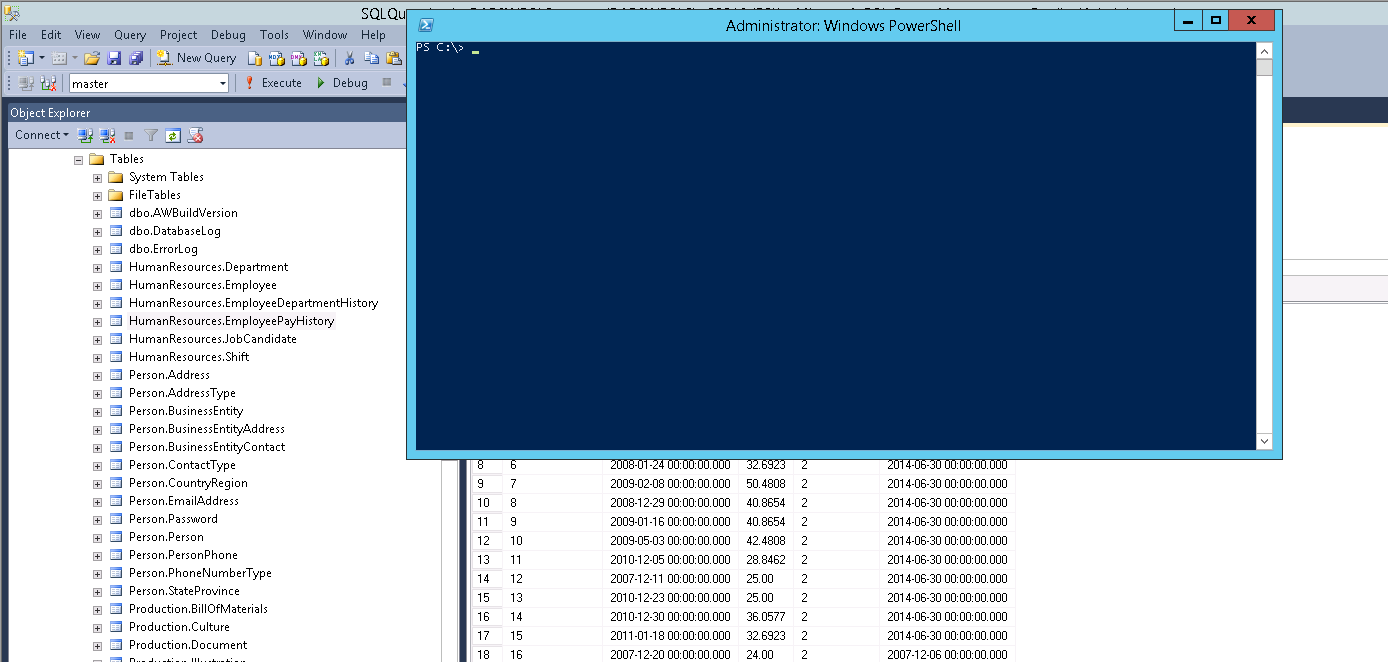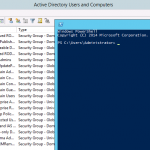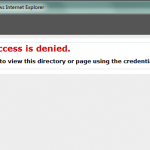I don’t consider myself a SQL Server expert so here’s a SQL Server Administrator Cheatsheet of queries for managing SQL Server.
Query all Database Files
List all the Data and Log files for your database with the file sizes.
select d.name, m.name, m.physical_name, m.type_desc, m.size from sys.master_files m inner join sys.databases d on (m.database_id = d.database_id) order by 1, 2
Index Last Rebuild Date
Use this query to check when an Index was last updated.
SELECT OBJECT_NAME(object_id) [TableName], name [IndexName], STATS_DATE(object_id, stats_id) [LastUpdated] FROM sys.stats WHERE name NOT LIKE '_WA%' AND STATS_DATE(object_id, stats_id) IS NOT NULL AND OBJECTPROPERTY(object_id, 'IsMSShipped') = 0 ORDER BY [LastUpdated] desc
Table and Index Size
If you need to find your largest tables this query will show how big each one is.
SELECT s.Name AS SchemaName, t.NAME AS TableName, p.rows AS RowCounts, SUM(a.total_pages) * 8 AS TotalSpaceKB, SUM(a.used_pages) * 8 AS UsedSpaceKB, (SUM(a.total_pages) - SUM(a.used_pages)) * 8 AS UnusedSpaceKB FROM sys.tables t INNER JOIN sys.schemas s ON s.schema_id = t.schema_id INNER JOIN sys.indexes i ON t.OBJECT_ID = i.object_id INNER JOIN sys.partitions p ON i.object_id = p.OBJECT_ID AND i.index_id = p.index_id INNER JOIN sys.allocation_units a ON p.partition_id = a.container_id WHERE t.NAME NOT LIKE 'dt%' AND t.is_ms_shipped = 0 AND i.OBJECT_ID > 255 GROUP BY t.Name, s.Name, p.Rows ORDER BY TotalSpaceKB desc
Shrink Transaction Logs
If you need to quickly need to shrink a transaction log. Use the query above to get the logical file name.
ALTER DATABASE [Database_Name] SET RECOVERY SIMPLE DBCC SHRINKFILE(Database_Logfile_Name) ALTER DATABASE [Database_Name] SET RECOVERY FULL
Query Database Backup History
Query backup history for specific database. This shows whether it was a full or transaction log backup, start and end times, and backup size.
SELECT upper(name) as 'Backup Type', CONVERT(VARCHAR(20), backup_start_date, 100) as 'Start', CONVERT(VARCHAR(20), backup_finish_date, 100) as 'Finish', backup_size as 'Size', recovery_model as 'Recovery Model' FROM msdb..backupset WHERE database_name = 'Database_Name' ORDER by backup_finish_date DESC
Grant Execute Permission to All Stored Procedures
Use this command to grant EXECUTE permission to all the stored procedures in a database.
GRANT EXECUTE TO [DOMAIN\USER]
Search the Contents of SQL Objects
To search the contents of Stored Procedures, Functions, Triggers, or Views use this query:
DECLARE @SEARCH VARCHAR(255), @notcontain Varchar(255) SELECT @SEARCH = 'specOuterPkgMaterialJoin' SELECT sysobjects.name AS [Object Name] , sysobjects.xtype [Type] FROM sysobjects,syscomments WHERE sysobjects.id = syscomments.id AND CHARINDEX(@SEARCH,syscomments.text)>0
To search the Command Text of SQL Agent Jobs for a string use the following query:
USE [msdb] GO SELECT servers.srvname [Server], jobs.name [Job Name], steps.step_id [Step ID], steps.command [Command], jobs.enabled [Enabled] FROM dbo.sysjobs jobs JOIN dbo.sysjobsteps steps ON steps.job_id = jobs.job_id JOIN master.dbo.sysservers servers ON servers.srvid = jobs.originating_server_id WHERE steps.command LIKE N'%SEARCH_TERM%'
Simple Backup and Restore of Tables
Use this to quickly backup a table, and update records from backup if needed.
-- Table Backup select * into MyBackup from MyTable; -- Table Restore Update MyTable set Enabled = 1 where Id in (select Id from MyBackup where status = 1)
SQL Login Creation
Use this to quickly create a SQL Login and SQL User, then grant datareader and datawriter, and also grant Execute access to certain Stored Procedures.
-- Create db login CREATE LOGIN [DOMAIN\ServiceIdX] FROM WINDOWS; GO -- Create db user and grant role membership CREATE USER [DOMAIN\ServiceIdX] FOR LOGIN [DOMAIN\ServiceIdX] WITH DEFAULT_SCHEMA = dbo; GO -- Add to db roles EXEC sp_addrolemember N'db_datareader', N'DOMAIN\ServiceIdX' EXEC sp_addrolemember N'db_datawriter', N'DOMAIN\ServiceIdX' -- Grant Exec on Stored Procedure GRANT EXEC on sp_MyStoredProc to [DOMAIN\ServiceIdX]
Other SQL Server Blogs
Other good resources for SQL Server Administration












